The Smallest Window in the World - Toledo's Tiny Marvel
Friday, March 28, 2025
In the heart of Spain, hidden within the winding cobblestone streets of Toledo, lies a peculiar architectural wonder that has captured the imagination of locals and tourists alike. This minuscule marvel, barely visible to the untrained eye, holds the prestigious title of "The Smallest Window in the World." But what makes this diminutive opening so special, and why has it become such a captivating attraction in a city already brimming with historical treasures?
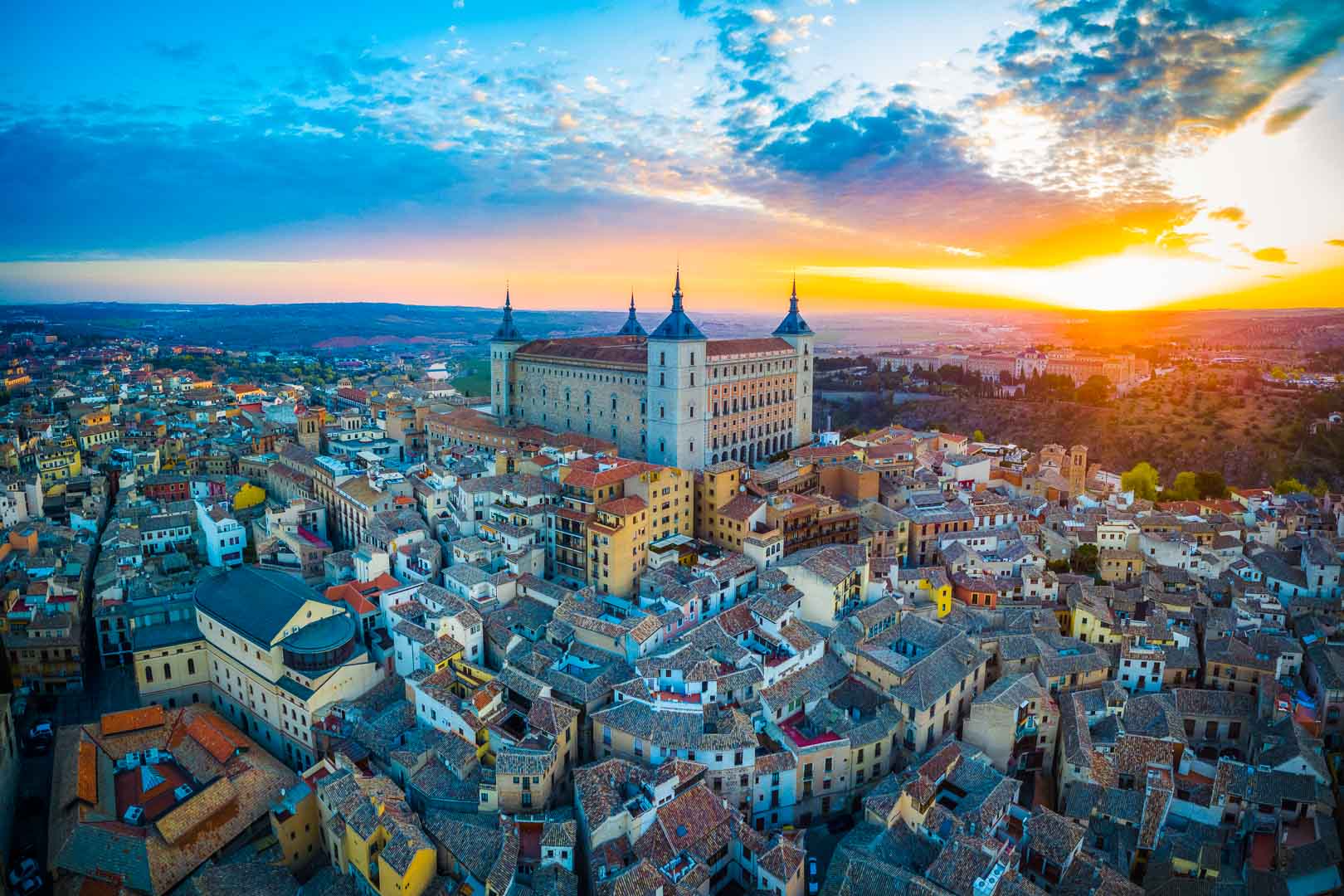
Before we delve into the intriguing tale of the world's smallest window, let's set the stage by exploring the enchanting city that houses this unique feature. Toledo, often referred to as the "City of Three Cultures," is a UNESCO World Heritage Site that has been captivating visitors for centuries. Perched atop a hill overlooking the Tagus River, this ancient city has been a melting pot of Christian, Muslim, and Jewish influences, each leaving an indelible mark on its architecture, culture, and spirit.
As you wander through Toledo's narrow, labyrinthine streets, you'll find yourself transported back in time. The city's skyline is dominated by the imposing Alcázar fortress and the majestic Gothic cathedral, while its streets are lined with well-preserved medieval buildings, synagogues, and mosques. It's within this rich tapestry of history that our tiny protagonist, the world's smallest window, resides.
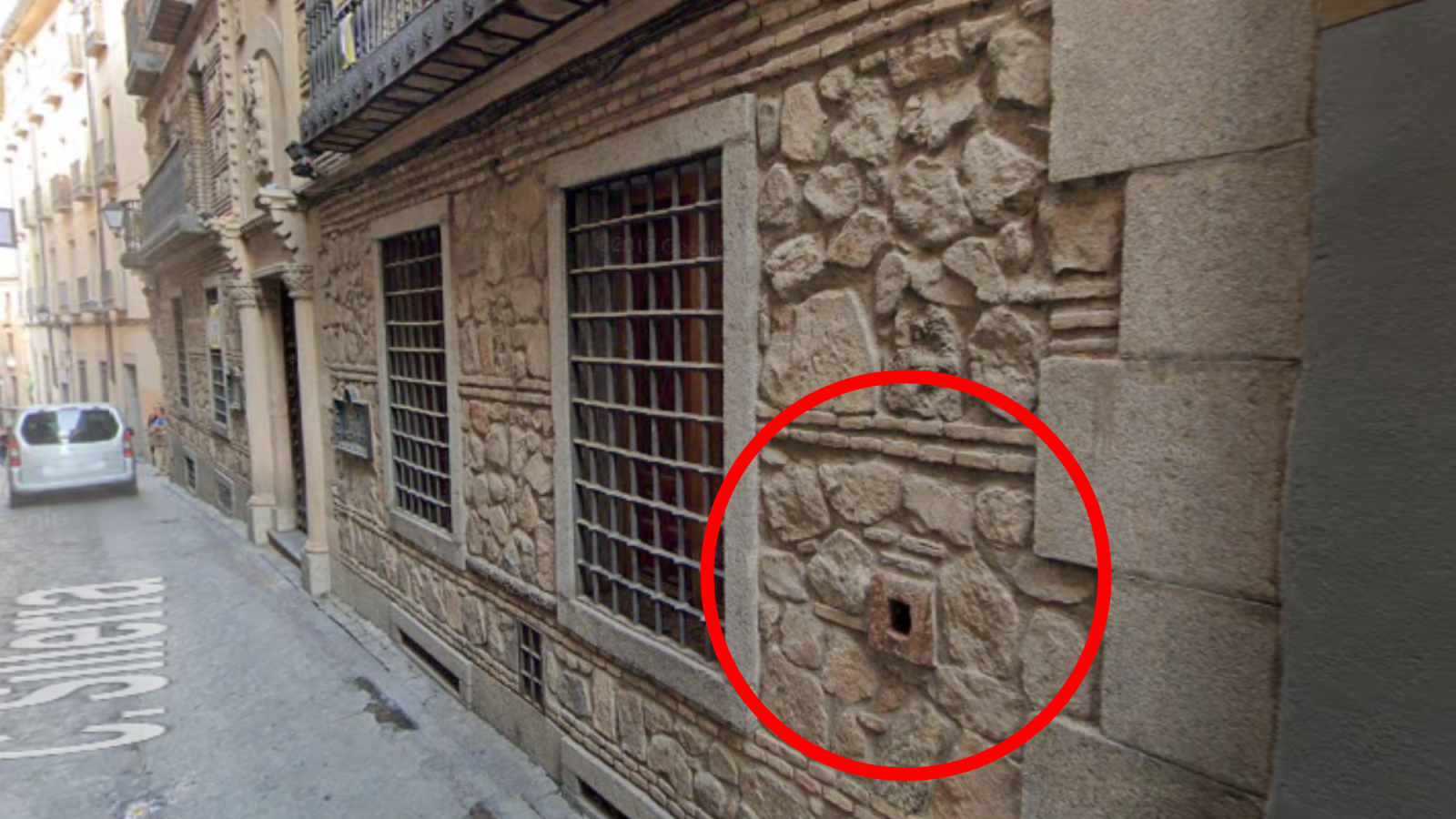
Tucked away on Calle Sillería (Sillería Street) at number 3, the world's smallest window is easy to miss if you're not actively seeking it out. This minuscule architectural feature is set into the wall of a 16th-century building known as the Casón de Los López. Once a grand Toledo residence, this historic structure now stands as a testament to the city's rich past and houses this peculiar claim to fame.
The window itself is truly a sight to behold – or rather, a sight you might struggle to behold without getting up close and personal. Smaller than the palm of an adult's hand, this tiny aperture has been officially recognised by the Guinness Book of World Records as the smallest window in the world. Its diminutive size begs the question: what could possibly have been its purpose?
The true function of this tiny window remains shrouded in mystery, sparking countless theories and legends among locals and historians alike. Some speculate that it might have served as a discreet peephole, allowing the occupants of the house to observe the street without being seen. Others suggest it could have been a clever way to pass small objects or messages in secret.
Adding to the intrigue is an inscription at the base of the window. Some claim it reads "Thank you, Allah" in Arabic, while others insist it says "Talaytula," the former Arabic name for Toledo. This cryptic message only deepens the mystery surrounding the window's origins and purpose.
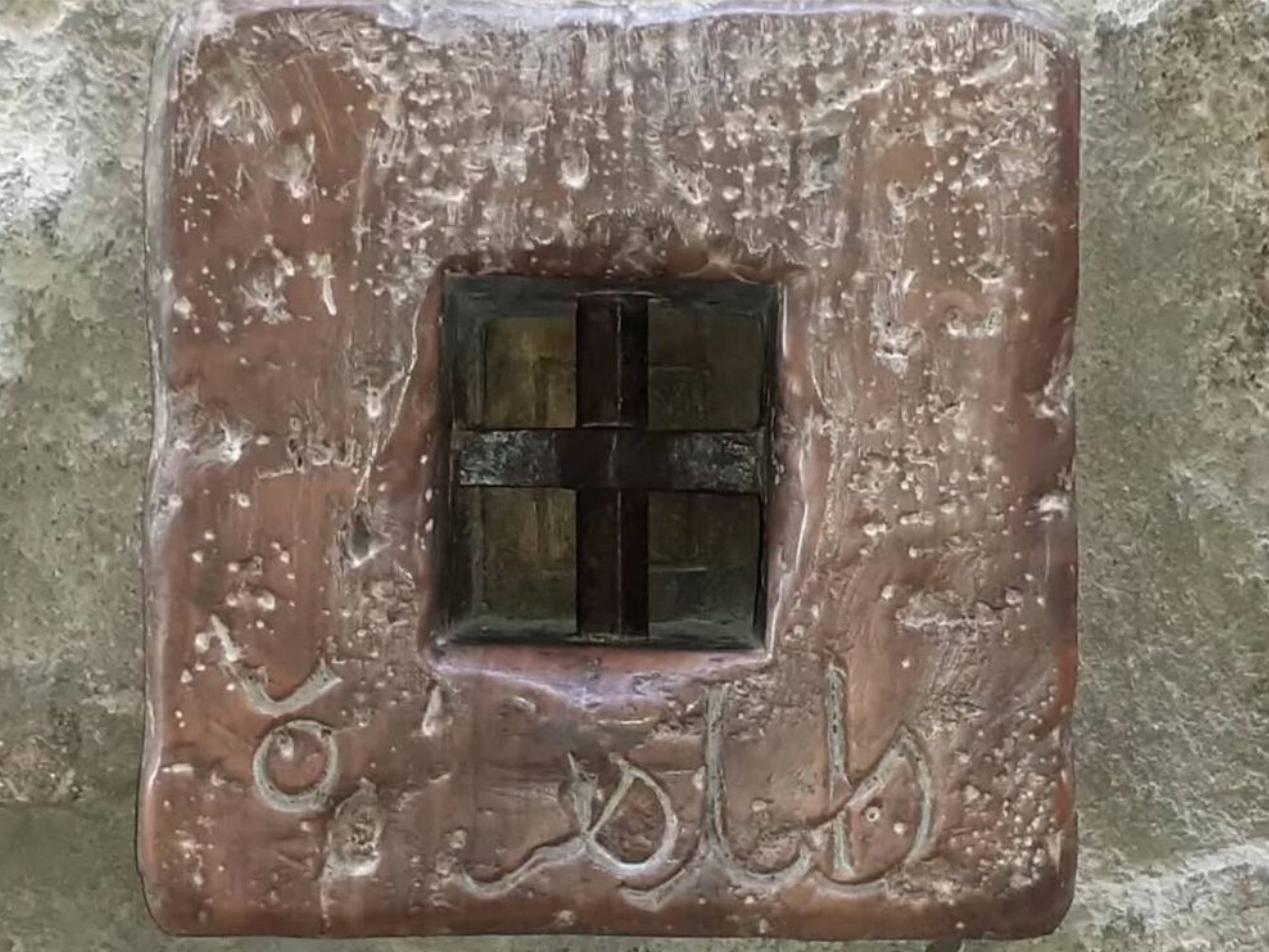
Regardless of its original function, the world's smallest window has become a symbol of Toledo's rich history and the fascinating blend of cultures that have shaped the city over the centuries.
The building that houses this miniature marvel, the Casón de Los López, is itself a fascinating piece of Toledo's architectural heritage. Dating back to the 16th century, this structure offers a glimpse into the grandeur of Toledo's past.
In 1973, the building underwent a careful restoration, preserving its historic character while adapting it for modern use. For many years, it housed a restaurant, allowing visitors to dine in the shadow of centuries-old walls and, of course, catch a glimpse of the world's smallest window. Although the restaurant has since closed, the building remains an important landmark in Toledo's old city.
Interestingly, just to the right of the famous tiny window, there's another, larger window that looks into the interior of the Casón de Los López. This juxtaposition of sizes serves to emphasise just how remarkably small the world-record-holding window truly is.

While the world's smallest window may be one of Toledo's more quirky attractions, it's far from the only hidden gem in this historic city. As you explore the winding streets and ancient squares, you'll discover countless other fascinating details that speak to Toledo's rich past.
From intricate Mudéjar designs adorning centuries-old buildings to hidden courtyards bursting with fragrant orange trees, Toledo is a city that rewards curious explorers. The smallest window is just one example of the many surprises that await those willing to look a little closer and dig a little deeper into the city's history.
In a world that often celebrates the biggest, the tallest, and the most grandiose, there's something refreshingly humble about Toledo's claim to fame. The world's smallest window reminds us that sometimes, it's the little things that capture our imagination and stick in our memory.
This tiny architectural feature has become a symbol of Toledo's ability to surprise and delight visitors. It represents the city's attention to detail, its preservation of history, and its celebration of the unique and the unusual.
 2
Like
Published at 12:22 PM Comments (0)
2
Like
Published at 12:22 PM Comments (0)
The Arab Baths in Girona
Friday, March 21, 2025
Nestled at the foot of Girona Cathedral, the Arab Baths of Girona offer an intriguing glimpse into medieval history and architectural prowess. Despite their name, these baths are not of Arabic origin but embody a rich fusion of cultural influences that span Roman, Islamic, and Jewish traditions. Built in the 12th century, the baths stand as a testament to the architectural and cultural exchanges that were taking place in medieval Spain.
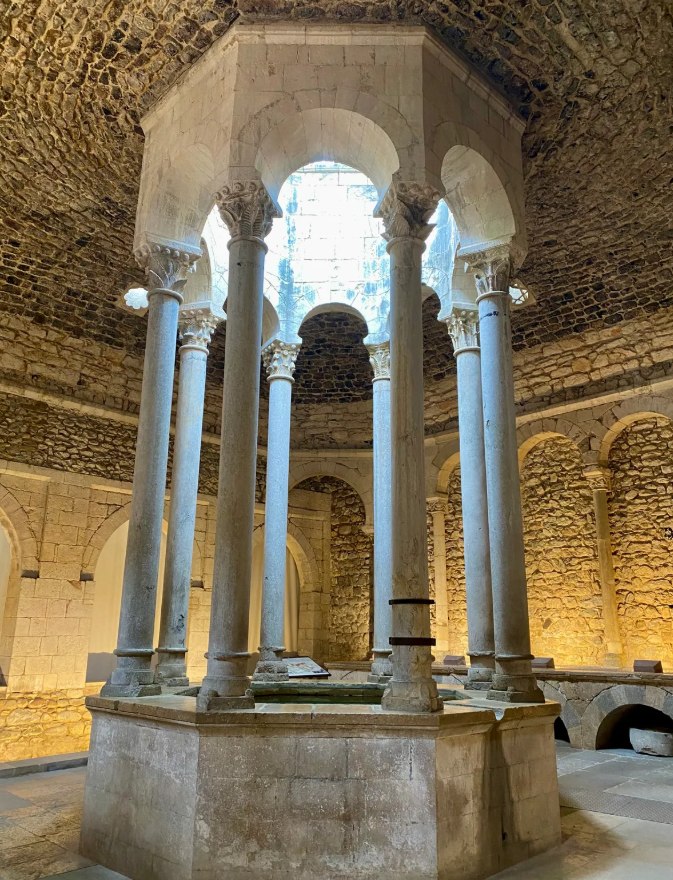
A Confluence of Cultures
The Arab Baths of Girona, constructed in the Romanesque style, were inspired by Roman baths, Muslim hammams, and Jewish mikvahs. This eclectic mix of architectural influences served not only a hygienic purpose during a time of significant urban development but also reflected the broader cultural and religious dynamics at play in medieval Spain.
The architectural design is both functional and aesthetically pleasing, comprising several rooms, each with a specific function. Visitors first step into a vestibule leading directly to the apodyterium, or dressing room. This room is particularly striking due to its octagonal layout, supported by eight slender columns adorned with decorative capitals. Central to this space is a small pool, dramatically lit by a lantern-lit dome overhead. Beyond here, visitors would find the frigidarium for cold water immersion, the tepidarium for warm bathing and relaxation, and the caldarium, offering a sauna-like experience.
From Ruin to Resilience
The baths operated as public amenities until the 14th century, playing a crucial role in the community. They faced partial destruction over the years due to wars and sieges. In the 13th century, recognising their importance to the cultural fabric of the area, King James II ordered their reconstruction. Over time, the baths served Jewish purification rituals and later found new life under the stewardship of Capuchin nuns.
By the 20th century, the baths had undergone a period of careful restoration to preserve their architectural and historical significance. These efforts have ensured that the baths continue to stand proudly today, offering visitors a window into the past and a richer understanding of the cultural exchange that defined medieval Spain.
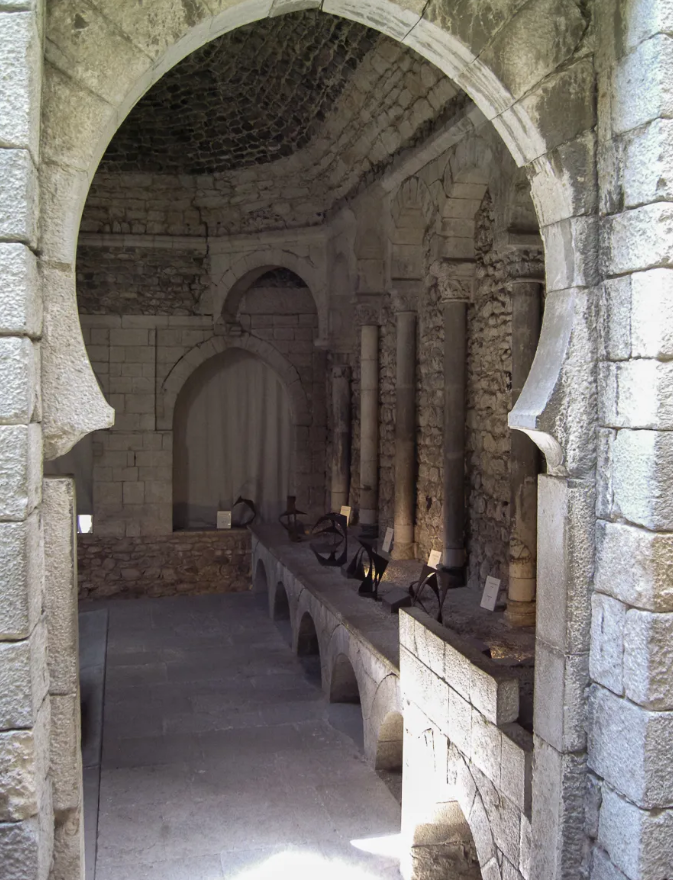
An Architectural Gem
Today, the Arab Baths attract numerous visitors who come to admire their unique blend of Romanesque and Islamic design features. The architectural highlights are many, but few can rival the intricately carved capitals or the stunning octagonal temple-like structure of the apodyterium.
Guided tours are available for those keen to delve into the historical functionalities and significance of these ancient bathing structures. The tours offer a detailed exploration of each room and its purpose, underscoring the baths' role as both a social and functional hub in medieval society.
Practical Information for Visitors
Visitors planning to explore the Arab Baths will find them open from Monday to Saturday, 10 a.m. to 6 p.m., and on Sundays from 10 a.m. to 2 p.m., Entry is reasonably priced at 3 euros per person, with discounts available for students, children, and seniors. The straightforward pricing and accessibility make it an attractive stop for those keen on uncovering historical layers woven into Girona's fabric.
A Living Legacy
The Arab Baths of Girona stand not just as relics of a bygone era but as living monuments to the cultural and historical intersections that have shaped Spain. They offer much more than historical insight; they are a reminder of the complex tapestry of human civilisation, where different cultures and ideas come together to create something enduring and beautiful.
Whether you're an architectural enthusiast, a history buff, or simply a curious traveller, a visit to the Arab Baths is bound to be a captivating journey into the rich and diverse heritage that continues to influence modern Spain. With their storied past and beautifully preserved structure, these baths remain one of Girona's proudest historical treasures, inviting us all to step back in time and appreciate the intricate dance of cultures that define our shared history.
 4
Like
Published at 11:48 PM Comments (0)
4
Like
Published at 11:48 PM Comments (0)
The March Blood Moon Eclipse from Spain
Wednesday, March 12, 2025
Astronomy enthusiasts and casual stargazers alike are in for a treat this March with an enchanting event – the blood moon eclipse. On the 14th of March, millions around the world will have the chance to witness a total lunar eclipse, a phenomenon that transforms the moon into a spectacular reddish hue, aptly named the blood moon.

Understanding the Blood Moon
A blood moon is a captivating astronomical event occurring during a total lunar eclipse. This spectacle happens when the Earth positions itself directly between the sun and the moon, casting its shadow over our lunar companion. Although the Earth blocks direct sunlight from hitting the moon, some sunlight still bends around the Earth's atmosphere, bathing the moon in a gorgeous red or orange glow. This unusual chromatic effect results from a process where shorter blue and violet wavelengths scatter in all directions, while the longer red and orange wavelengths filter through more directly, painting the moon in shades of red.
The phenomenon can be likened to experiencing all the world's sunrises and sunsets projected onto the moon's surface. NASA explains this beautifully, noting that the same atmospheric conditions that give us blue skies and red sunsets are at play during a lunar eclipse.
Viewing Locations Across the Globe
This remarkable event won't be a show for just one region. The total lunar eclipse in March will be visible across large swathes of the planet. Western Europe, Asia, parts of Australia, West Africa, and both Americas will have an opportunity to admire this phenomenon. Within Spain, those residing in the Canary Islands, as well as central and western regions on the mainland, will have some of the best seats in the house. Ceuta and Melilla also promise excellent views, while the eastern Iberian Peninsula and the Balearic Islands will witness the event to a lesser extent.
Prime Viewing Time for the Blood Moon
According to NASA, the day of the eclipse, 14th March, promises an early start for those in Europe. The most vivid display of the blood moon will occur at precisely 6:58 am. The duration of this total eclipse phase is expected to last approximately one hour and six minutes, during which the Earth's shadow will completely blanket the moon, capturing imaginations around the globe.
For those observing the eclipse in Spain, the totality phase will begin at approximately 8:25 am. However, viewers should be aware that the availability of clear skies and minimal light pollution will enhance the experience. The challenge for many will be catching this moment before the morning sun's first rays blur the celestial display. Nonetheless, the preliminary phases of the eclipse can still offer an enthralling spectacle, visible in the dark pre-dawn sky.
Enhance Your Experience
Those keen to witness the blood moon up close should consider using binoculars or a telescope for an improved view. With these tools, the subtle gradients of red and orange, along with the astoundingly crisp details of the moon's surface, are brought sharply into focus. It’s a reminder that while eclipses are relatively common, each brings its unique celestial artistry.
The full moon in March will appear in the constellation of Virgo, adding another layer to this astronomical event's allure. Virgo, a prominent constellation, is often associated with themes of harvest and bounty, making the blood moon's rich hues even more symbolically resonant.
Historical and Cultural Significance of the Blood Moon
Throughout history, lunar eclipses have been imbued with cultural and spiritual meanings. Many ancient civilizations viewed lunar eclipses as powerful omens. In some cultures, the reddened moon was thought to be a celestial canvas that foretold significant events. Over time, while scientific understanding of the phenomenon demystified its occurrence, the awe-inspiring nature of a blood moon continues to captivate people.
From a more scientific angle, the blood moon offers invaluable opportunities for scientific exploration. Researchers utilise the spectroscopic properties observed during lunar eclipses to better understand Earth's atmosphere and its composition. This in turn enhances our understanding of similar celestial phenomena on other planets.
Whether you're an avid astronomer or someone who rarely looks up at the night sky, the blood moon eclipse is a call to pause and appreciate the wonders of the universe. The sheer mechanics of a lunar eclipse underscore the precision and beauty of cosmic alignments. Such phenomena remind us of our place in an ever-expanding universe, and the infinite cycles that continue to turn regardless of human intervention.
As the date approaches, mark your calendars, prepare your viewing gear, and above all, hope for clear skies. Whether it stirs a deeper appreciation for the cosmos, incites a childlike wonder, or prompts a moment of reflection, the blood moon eclipse is a gentle reminder of the stunning beauty our universe has to offer.
 0
Like
Published at 9:05 AM Comments (0)
0
Like
Published at 9:05 AM Comments (0)
Finding Relief in Spain: The Best Places to Live with Arthritis
Friday, March 7, 2025
Many people with arthritis find that changes in the weather can significantly affect their symptoms. Cold, damp weather often exacerbates joint pain and stiffness, while warm, dry climates tend to provide some relief. For those seeking a change of scenery and a potential improvement in their arthritis symptoms, Spain offers a compelling option. With its diverse climate zones and a variety of charming towns and cities, Spain has something to offer everyone. This article explores some of the best places to live in Spain if you have arthritis, taking into account climate, healthcare, cost of living, and local culture.

How Climate Affects Arthritis
Before diving into specific locations, it's important to understand how climate can influence arthritis symptoms. Research suggests that several factors can play a role:
-
Temperature: Cold weather can cause the fluid inside joints to thicken, leading to increased stiffness and pain. In fact, one study showed that pain increased with every 10-degree drop in temperature. Conversely, warmer temperatures have been associated with increased gout attacks and a worsening of some lupus symptoms.
-
Humidity: High humidity may exacerbate swelling in joints, intensifying pain.
-
Barometric Pressure: Changes in air pressure can cause tissues to expand or contract, potentially leading to discomfort.
-
Sunlight: While sunlight is a source of vitamin D, which is important for bone health, some medications for arthritis can increase sensitivity to sunlight. This is known as photosensitivity and is something to be aware of, especially for those with lupus.
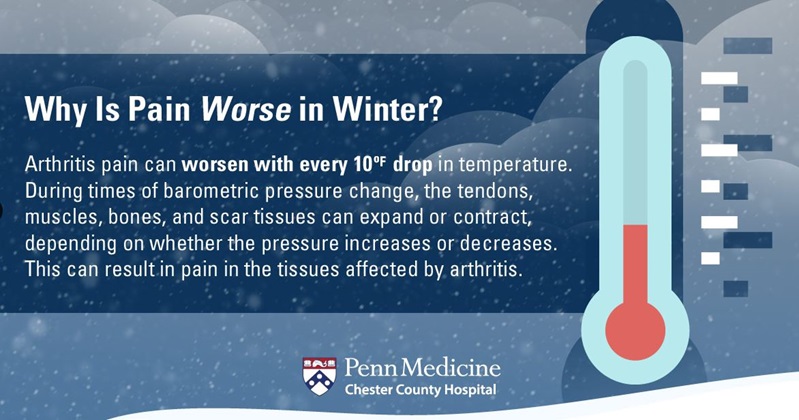
Furthermore, it's important to note that the impact of weather on arthritis can vary significantly among individuals and may differ depending on the type of arthritis. For example, people with osteoarthritis generally prefer warm and dry weather, while those with rheumatoid arthritis tend to prefer cooler weather. Warm weather may also improve symptoms for some people with psoriatic arthritis.
In addition to the direct effects of weather on joints, other factors can contribute to increased pain perception. For instance, stretches of cloudy or rainy days may lead to low mood, which may cause people to focus more on their pain. On cold, rainy days, patients may also be less likely to be out and active, and a lack of physical activity is known to worsen joint pain and stiffness.
While the exact relationship between weather and arthritis is complex and varies between individuals, many people find that warm, dry climates offer the most relief.
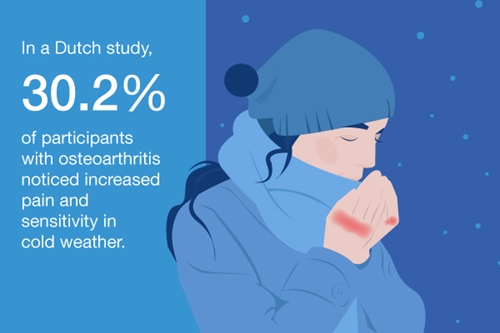
Lifestyle Management for Arthritis
While climate plays a significant role in managing arthritis symptoms, lifestyle factors are equally important. Here are some key strategies for managing arthritis:
-
Stay Warm: If your joints don't like the cold, it's crucial to stay warm. This can involve layering up with warm clothing, using heating pads or electric blankets, and taking warm baths to help loosen stiff joint.
-
Get Moving: Regular exercise is one of the best things you can do to manage arthritis pain and keep your joints healthy. Physical activity helps boost energy, increase strength and flexibility, and release endorphins, which can help ease pain.
-
Stretch Regularly: Stretching, especially before and after exercise, can help loosen stiff joints and reduce the risk of injury.
-
Eat a Healthy Diet: A balanced diet rich in omega-3 fatty acids, found in fatty fish, nuts, and seeds, may help reduce inflammation. Limiting sugar and refined carbohydrates is also beneficial.
-
Maintain a Healthy Weight: Maintaining a healthy weight can significantly reduce stress on your joints, especially weight-bearing joints like knees and hips.
-
Ensure Sufficient Vitamin D: Vitamin D deficiency is common and can contribute to increased arthritis pain and bone loss. It's essential to get your vitamin D levels checked and supplement accordingly if needed.
-
Sun Protection: For those with photosensitivity or lupus, sun protection is crucial. This includes spending time in the shade, wearing protective clothing, and using sunscreen with a high SPF.
-
Monitor Weather Patterns: Keep an eye on the weather forecast and plan activities accordingly. The Arthritis Foundation even has a tool that helps predict the risk of weather-related discomfort for your area.
By combining these lifestyle strategies with a suitable climate, you can create a comprehensive approach to managing your arthritis and improving your overall quality of life.
Environmental Factors and Arthritis
In addition to climate and lifestyle, environmental factors can also influence arthritis. Research suggests that exposure to certain pollutants may increase the risk and severity of arthritis, particularly rheumatoid arthritis. For example, living in urban areas or near highways has been linked to an increased risk of rheumatoid arthritis, potentially due to exposure to pollutants like dioxin.
Furthermore, studies have shown that a combination of environmental factors, such as air and water quality, building type, and socioeconomic status, can contribute to an increased risk of arthritis. This highlights the importance of considering the overall environment when choosing a place to live with arthritis.
Warm and Dry Regions in Spain
Several regions in Spain stand out for their warm, dry climates, which can be particularly beneficial for people with osteoarthritis:
-
Andalusia: Located in southern Spain, Andalusia boasts a Mediterranean climate with hot, dry summers and mild winters. Cities like Seville, Cordoba, and Malaga offer a blend of cultural attractions, modern amenities, and a relaxed lifestyle. Seville is known for its scorching summers, with temperatures often exceeding 30°C. Cordoba, located inland, also experiences hot summers, with temperatures reaching 46.9°C in July 2017.
-
Murcia: Situated in southeastern Spain, Murcia is known for its semi-arid climate with low humidity and plenty of sunshine. The region offers a variety of coastal towns and cities with beautiful beaches and a relaxed atmosphere. Murcia reached a record temperature of 46°C (115°F) in July 1994.
-
Valencia: The southern part of the Valencia region, including the Costa Blanca, enjoys a warm Mediterranean climate with mild winters and plenty of sunshine. Cities like Alicante and Torrevieja offer a mix of coastal living and cultural attractions.
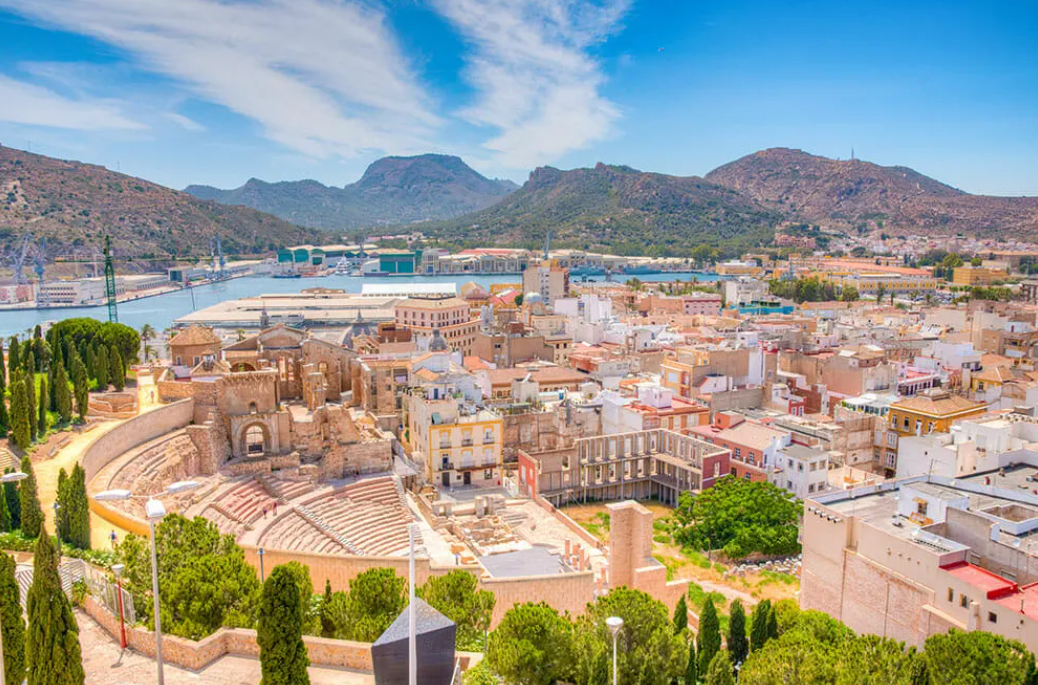
Cities with Good Healthcare and Infrastructure
Within these regions, several cities stand out for their good healthcare facilities and infrastructure:
Andalusia
-
Seville: Seville has major hospitals equipped with high-tech equipment and offers both public and private healthcare options. Seville is also renowned for its flamenco dancing, vibrant festivals like the April Fair and Holy Week, and a rich culinary tradition.
-
Malaga: Malaga boasts a range of excellent hospitals, including the Hospital Regional Universitario, Quirón Hospital, and Vithas Xanit International Hospital. As the birthplace of Pablo Picasso, Malaga has numerous museums and art galleries, and a lively atmosphere with a mix of traditional and modern influences.
-
Marbella: Marbella is home to some of the best hospitals in Spain, including the Hospital Costa del Sol and the Quirón Marbella. Marbella offers a luxurious lifestyle with beautiful beaches, upscale resorts, and a vibrant nightlife.
Murcia
-
Murcia City: Murcia has several well-equipped hospitals, including the Hospital General Universitario Virgen de la Arrixaca and the Quirónsalud Murcia Hospital. Murcia offers a blend of historical sites, natural parks, and a strong agricultural tradition with a focus on local produce and cuisine.
-
Cartagena: Cartagena has two major hospitals, the Hospital General Universitario Santa María del Rosell and the Hospital General Universitario Santa Lucía, offering a range of medical services. Cartagena is a coastal city with a rich maritime history, a well-preserved walled city, and a vibrant cultural scene with influences from Africa, Spain, and indigenous cultures.
Valencia
-
Valencia City: Valencia has a number of internationally recognized hospitals, including La Fe Hospital and the IVO oncology center. Valencia boasts a modern infrastructure with excellent transportation networks, including a high-speed train connecting it to Madrid.
-
Torrevieja: Torrevieja has a modern private hospital, Hospital Quirónsalud Torrevieja, and is also within easy reach of larger hospitals in Alicante. Torrevieja is a lively city with a mix of Spanish and international residents, known for its beautiful beaches, salt lakes, and a relaxed atmosphere.
Choosing the best place to live in Spain with arthritis depends on individual preferences and needs. However, based on the research, Andalusia, Murcia, and Valencia offer a combination of warm, dry climates, good healthcare facilities, affordable living costs, and a welcoming culture. Cities like Seville, Malaga, Cordoba, Murcia, and Torrevieja stand out as particularly attractive options.
It's important to remember that managing arthritis effectively often requires a personalized approach. What works for one person may not work for another, and it's crucial to consider your specific needs and preferences when making a decision.
Before making a move, it's highly recommended to visit different locations at different times of the year to experience the climate and culture firsthand. This will help you determine which location best suits your individual needs and lifestyle.
Ultimately, finding the right place to live in Spain can be a significant step towards improving your quality of life with arthritis.
 2
Like
Published at 11:03 PM Comments (0)
2
Like
Published at 11:03 PM Comments (0)
Spam post or Abuse? Please let us know
|
|